Canon 50mm f1.8 LTM Lens Review

Canon 50mm f1.8 LTM lens. My copy is a bit beaten up. That gives it extra tones power!
Many will associate Canon with SLR cameras and lenses. And also their mirrorless offerings. But did you know that in the early days they made rangefinders and lenses for them? You probably did but now you know again.
Their cameras used LTM ( Leica-Thread-Mount ) screw mount. It's also known as L39 or M39 ( the same screw mount that the soviet rangefinders use ). LTM was also used on the pre-M Leica rangefinders also known as Barnack Leicas. Logically their lenses also use this mount. M mount accepts LTM lenses through a cheap adapter. It also keeps the rangefinder coupling.
I have quite a few of their LTM offerings. Both in camera and lens realms. And I want to make a small series of reviews about them - starting with the 50mm f1.8 lens.
Brief History
If you've read my other reviews / writings then you'll know that I'm not much into history so I'll plot down some real basic facts.
The 50mm f1.8 that I'm reviewing was released in the late 1950s. This wasn't Canon's first 50mm lens. They had made quite a few different versions before. Including ones with different apertures. And even collapsible ones. Some of the earlier ones go by the name of Serenar.
The first 50mm f1.8 lenses came in a shiny chrome build. The later ones ( including the one reviewed ) were built using lighter metals and different color. Optics are almost identical ( using a planar design ). Some claim that there are slight differences. I can't confirm or deny it.
Although these lenses are cheap - they are well regarded. Prices are starting to rise for them but the 50mm f1.8 can still be had below $100. Most of them from Japan.
One downside is that this lens is prone to hazing in the middle lens elements near the aperture blades. If haze is not dealt with in a reasonable time then it will etch the glass. That will make the haze permanent. Or at least very difficult to fix. You can still use lenses with haze but they have a degraded performance in certain light conditions. Most of the degradation comes in reduced contrast but it can also give a light "mist-like" look. Which can actually be a positive if you like that type of rendering.
This means that when buying the lens you have to check whether it has haze or not - unless you don't care much about it ( like me ).
My History With This Lens
I got this lens as a cheap 50mm option to use on a Canon Model 7 ( one of Canon's LTM cameras ). My first rangefinder fifty was Jupiter-8 - a 50mm f2 ( .com ) lens. It's not a bad lens and some love it but I wanted something non-soviet.
I actually got two of these lenses. I submitted bids to many lenses on Ebay and happened to win two of them. At the time they were so cheap that I didn't even have to pay import tax from Japan. These lenses were likely cheaper than the Jupiter-8 which is already a cheap lens.
Part of the reason why they were so cheap was the haze issue as both lenses had it. Haze on one of the lenses was significant enough that it had etched the glass. The other one was smaller and I managed to clean most of it although there's still some left.
I have since sold the more hazed version. It was still usable but I didn't need two identical lenses.
I have shot the lens both on film and digital. Shooting on digital is a recent discovery - I really like how it behaves there. More about it later.
Build Quality
Lens is an all metal build which is very nice. It does feel solid although there is a bit of play between the various elements like the focus or aperture rings. It's better than soviet lenses ( there might be some good copies of those ) but worse than Leica LTM lenses. The play is small enough to not impact the usage - it's just not as nice.
Ergonomics
Lens itself is small and light. It won't weigh you down. It also balances well on the camera and the smaller size allows it to fit in smaller bags.

Lens is compact and small in a cute way. You want to pick it up and cuddle it...and then use it to produce some amazing pictures.
Aperture ring is easy to turn but not so easy that you would do it by accident. Leica lenses tend to have too easy to turn aperture rings that I can sometimes turn by accident. It's a clicked aperture and you can still feel the click although it is somewhat dampened. It's definitely not as nice as clicks on Leica lenses. For reference: Jupiter-8 is clickless. Which is not to my liking.
Focussing is smooth. I tend to use the infinity lock pin to focus and it feels good. I would prefer an easier to turn focus ring but it could lead to accidental focussing. Focus throw ( how much you need to turn the focus ring from closest focus to infinity ) also seems spot on. It's quick and easy to focus.
The one element I'm not so sure about is the infinity lock. When you focus on infinity the focus ring locks. To release it you have to press the infinity lock toggle and turn the lens. It doesn't fill me with rage but I don't know why it's useful. I doubt it's to avoid accidental misfocussing. I've never focussed away from infinity by accident. Is it to make it easier to remove the lens from the camera? It's a screw mount lens that you need to grip and twist off so maybe. I like the infinity lock toggle itself as it makes it easier to focus ( it's like a poor man's focus tab ). The intended functionality is a mystery. It's possible to hack it to not lock but I have not done it yet. Chances are that I will.
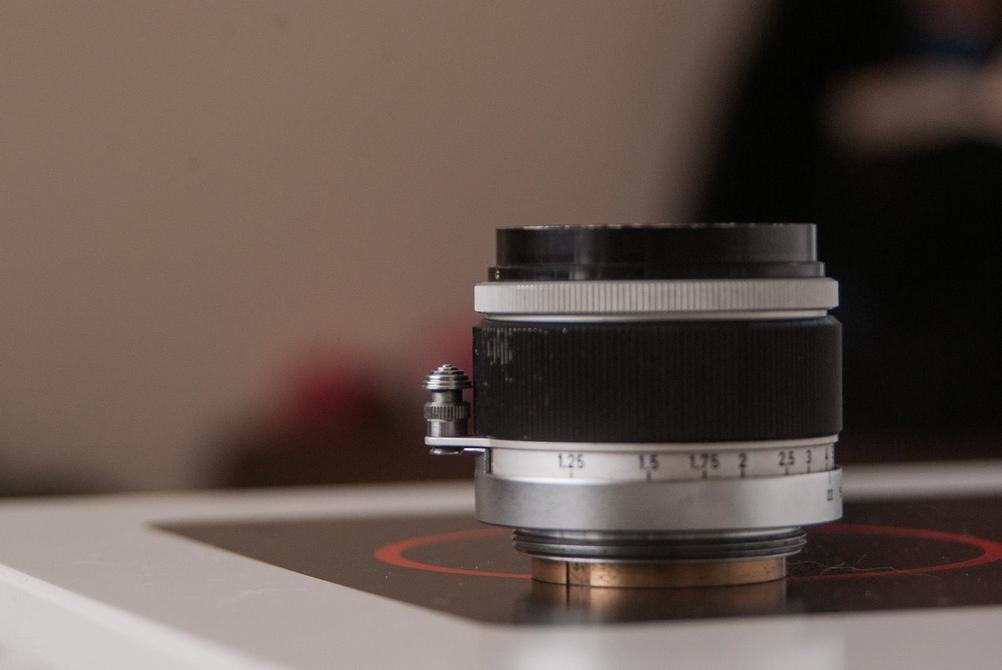
Here's the star of the hour. The infinity lock. To release the lock one needs to compress the pin and then move away from infinity.
Not the most difficult task. It's also possible to do it with one hand - albeit not easily. It's just difficult to justify its existence. And by difficult I mean impossible.
In essence - it's easy to use. Not as pleasing as a Leica lens. And the infinity lock feature boggles the mind but it doesn't make it bad to use. Especially for the price point.
Lens Rendering
The most important part of any lens is how it actually renders the images. It could have the best build quality and ergonomics in the world but if it only renders poop emojis then it's not a lens that's worth using. Unless you like poop emojis.
I also judge the rendering based on feel not charts and zooming in on pictures. I care whether the results are pleasing. And are printable.
Sharpness & Contrast
Usually I split sharpness from contrast but I want to talk about them at the same time for this lens.
The lens has good sharpness. It resolves plenty of detail. Smaller contrast and "misty" look degrades that. It can appear that pictures are lacking sharpness.
On film the lower contrast together with a "misty" look can be a bit too much. In combination with higher grain film which loses a bit of detail - pictures can look soft and not well defined. It can be a look that works and someone might prefer but it's not for me. I do like it for portraits though.
If you close the lens down then contrast improves and "misty" look lessens. It's still there... in the background... lurking... and you feel it's there... ready to attack when you open the aperture again.
On digital. On digital I love this lens. The smaller contrast and "misty" look makes the digital pictures look more like film. Which is super good! Because the detail is still there and it's easier to post-process you can get some amazing results. The "misty" look also gives the pictures an amazing soft glow which harkens back to older Leica lenses.
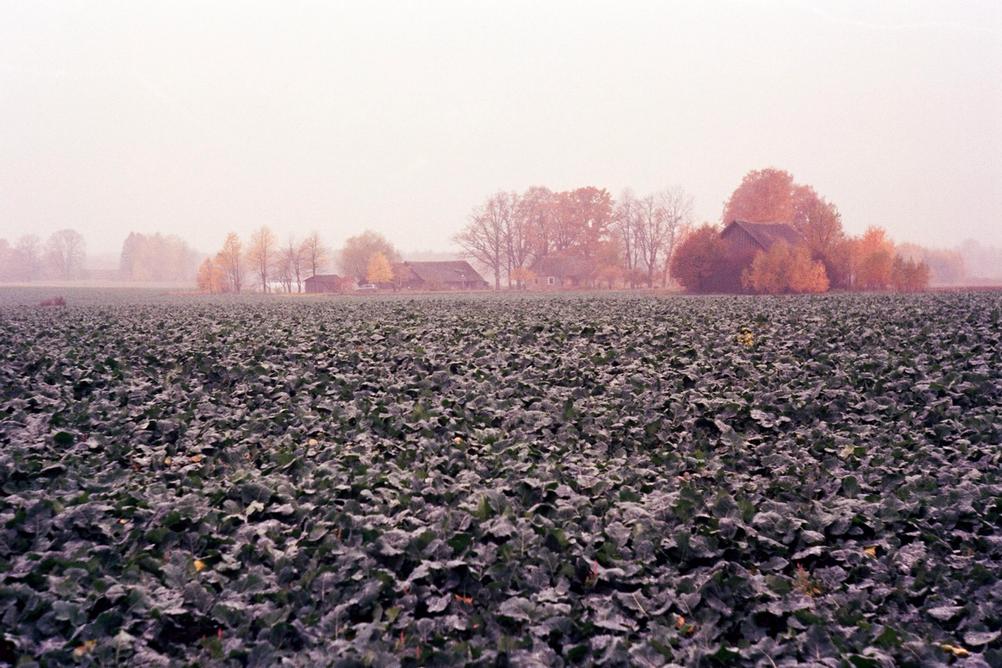
- Camera
- Canon Model 7
- Lens
- Canon LTM 50mm f1.8
- Film
- Kodak Ektar EI100
- Development
- Compard Digibase Ready To Use Kit
- Scanner
- Reflecta ProScan 10T
I wish this was crispier. I know that it's a gray day. With real mist. But I feel like it could've had a more detailed rendering.
The slightly wonky colors are because of my haphazard temperatures in C-41 home development.

- Camera
- Canon Model 7
- Lens
- Canon LTM 50mm f1.8
- Film
- Ilford HP5+ EI400
- Development
- Ilford LC29
- Scanner
- Reflecta ProScan 10T
Lens can still render contrasty images when the light itself makes the scene contrasty. You can start to see the glow at the top of the image where light hits the hardest.

- Camera
- Canon P
- Lens
- Canon LTM 50mm f1.8
- Film
- Kodak Tri-X EI400
- Scanner
- Reflecta ProScan 10T
Another example where I feel like the image could've been crispier. It's a gray day but Tri-X is a contrasty film.
It's not a bad rendering - just would prefer a more punchier one.
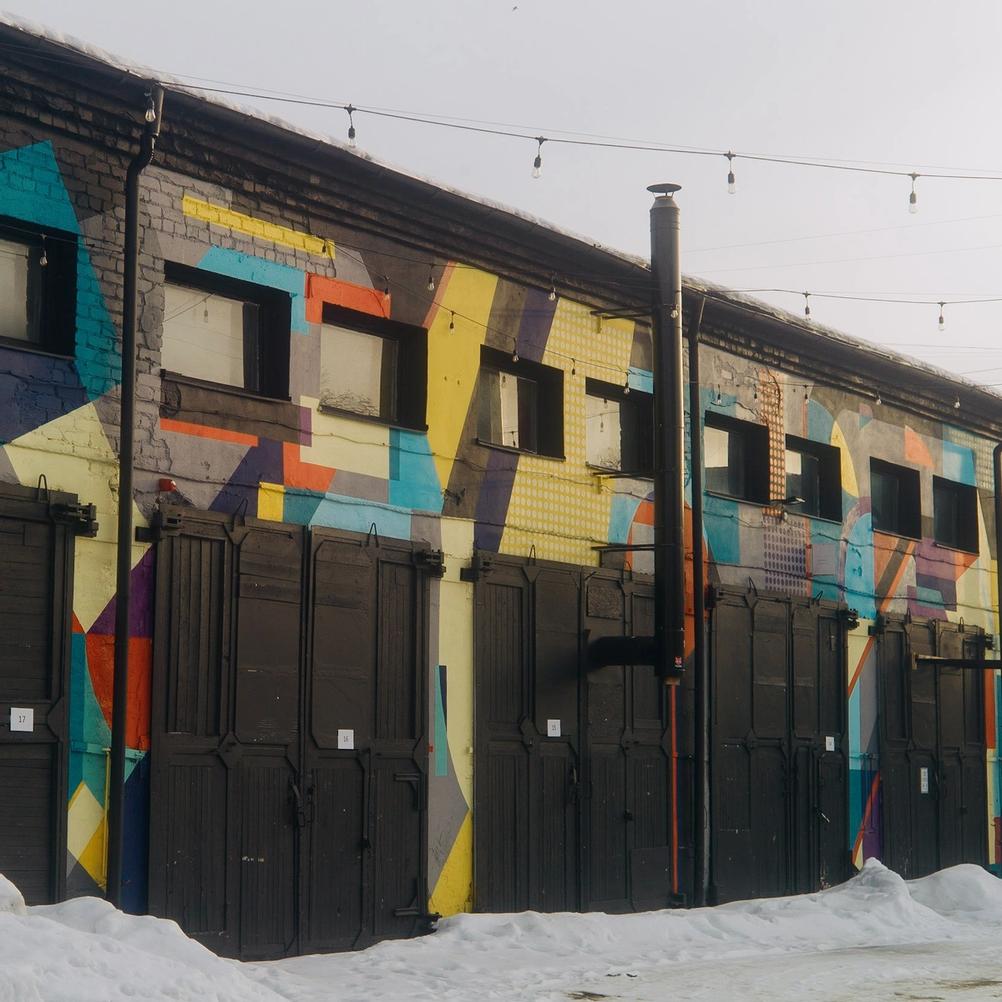
- Camera
- Leica M9
- Lens
- Canon LTM 50mm f1.8
Moving to digital you can still see the glow. But now it adds to the image rather than taking away from it. The muted colors and contrast also helps the scene.

- Camera
- Leica M9
- Lens
- Canon LTM 50mm f1.8
And obviously it's a lot easier to edit away anything that you don't like when shooting digitally. This looks like a modern lens rendering. The more closed down aperture helps in that as well.
Color Rendering
The lens doesn't have any specific color cast. The colors are muted as you would expect from an old lens, but I wouldn't call the look "vintage".
On film it may not look the best on neutral film like Portra or when shooting in very gray weather. It's nice on higher saturation films like Ektar but also when there's plenty of color outside.
When shot on digital cameras it's very nice. It will tend to mute the often poppy digital colors. That will give the photos the filmic look that everyone desires ( I hope ). I would still not shoot it when it's grey outside.
I like how the lens renders colors in sunlight or slightly cloudy sunlight. I can't pinpoint a certain cast that it gives but it looks very pleasing to my eyes. I especially like it on Leica M9 ( and possibly other CCD sensors - the only digital sensors worth using ).

- Camera
- Canon Model 7
- Lens
- Canon LTM 50mm f1.8
- Film
- Kodak Ektar EI100
- Development
- Compard Digibase Ready To Use Kit
- Scanner
- Reflecta ProScan 10T
Saturated film and strong colors in the scene can render strong colors even on a gray day.
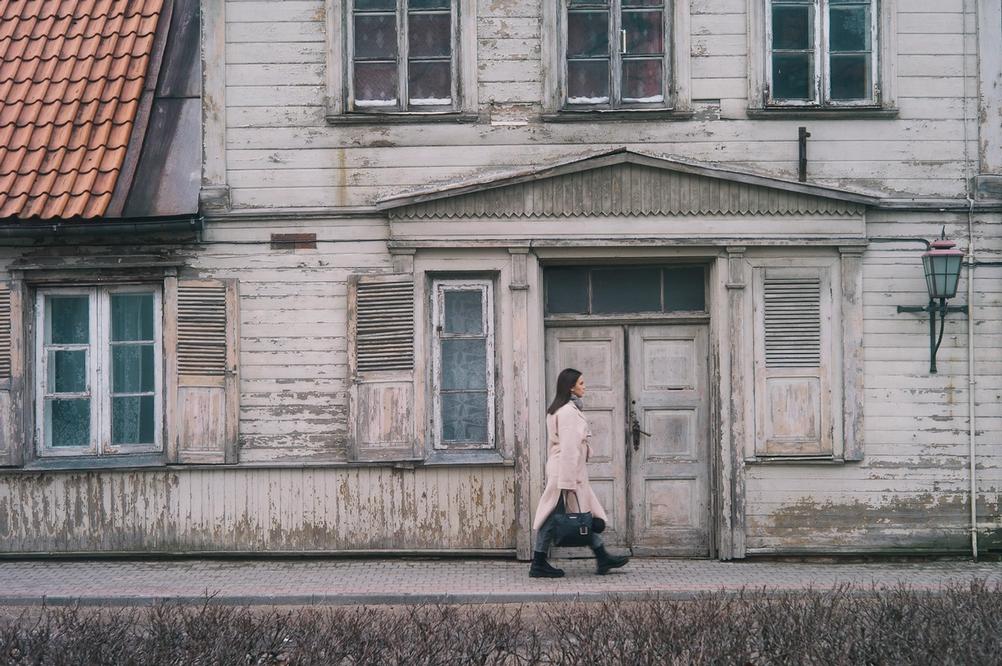
- Camera
- Leica M9
- Lens
- Canon LTM 50mm f1.8
On digital the lens color rendering helps to achieve that all loved "film look".
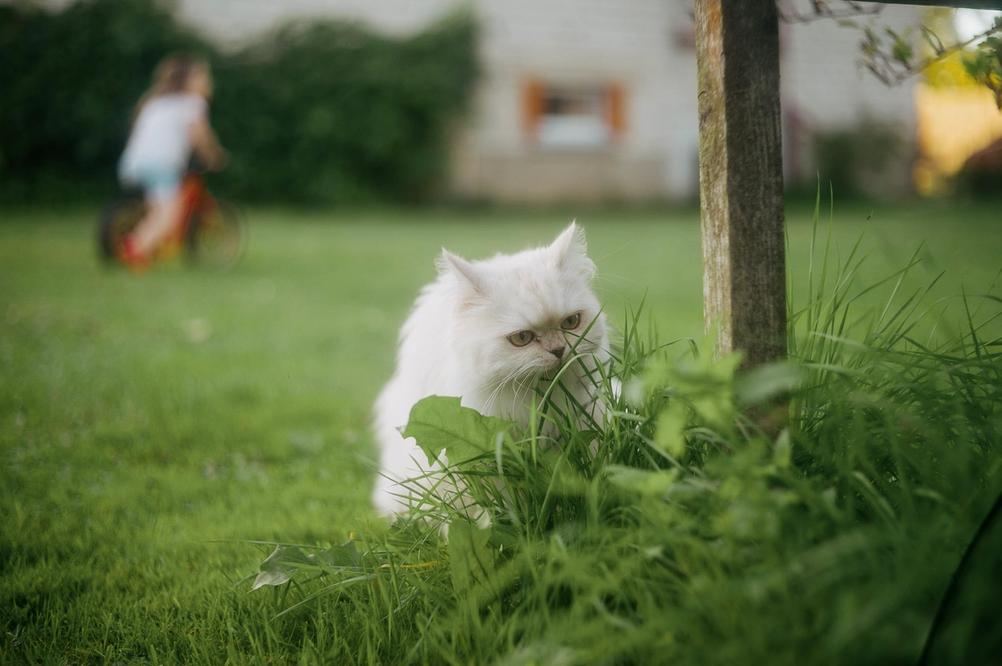
- Camera
- Leica M9
- Lens
- Canon LTM 50mm f1.8
It's hard for me not to like how the colors are rendered on digital sensors.
This might have been taken with the more hazed over lens.
Flare Resistance
It's an old lens which means worse coatings that help with shooting against the sun. Also my copy has a slight haze - that definitely doesn't help so take this section with a pinch of...curry.
Flare resistance is not the best but I put it down to haze. The contrast loss is quite significant when shooting against the sun. Depending on the situation it can be difficult to pull it back. Even when shot digitally.
You can still shoot this in sunny weather. And you should as it works brilliantly there! Just be aware of the certain light hitting angles that will not deliver the best results. Especially if your copy has haze.

- Camera
- Canon P
- Lens
- Canon LTM 50mm f1.8
- Film
- Ilford HP5+ EI800
- Development
- Compard R09 / Rodinal; Dilution 1:50; 16:00min
- Scanner
- Reflecta ProScan 10T
Shot against bright light will destroy contrast and leave the photo very faded. On film there's not much you can do to save this.

- Camera
- Leica M9
- Lens
- Canon LTM 50mm f1.8
On digital you can kind of edit yourself away from the blown contrast. You won't make the image look normal but it can be a nice effect in itself.
Background Separation & Bokeh
These days a f1.8 lens might not be considered a bokeh monster or whatever but it can still throw backgrounds out. It separates subjects with ease. Not the best in class and it doesn't have any "magic" but it looks good.
Bokeh appears smooth. Planar design lenses can sometimes have a busy background but I have not seen it in this example. Bokeh does look better on film as it tends to smooth things even more but that's the case for most lenses. It's still plenty good on digital.
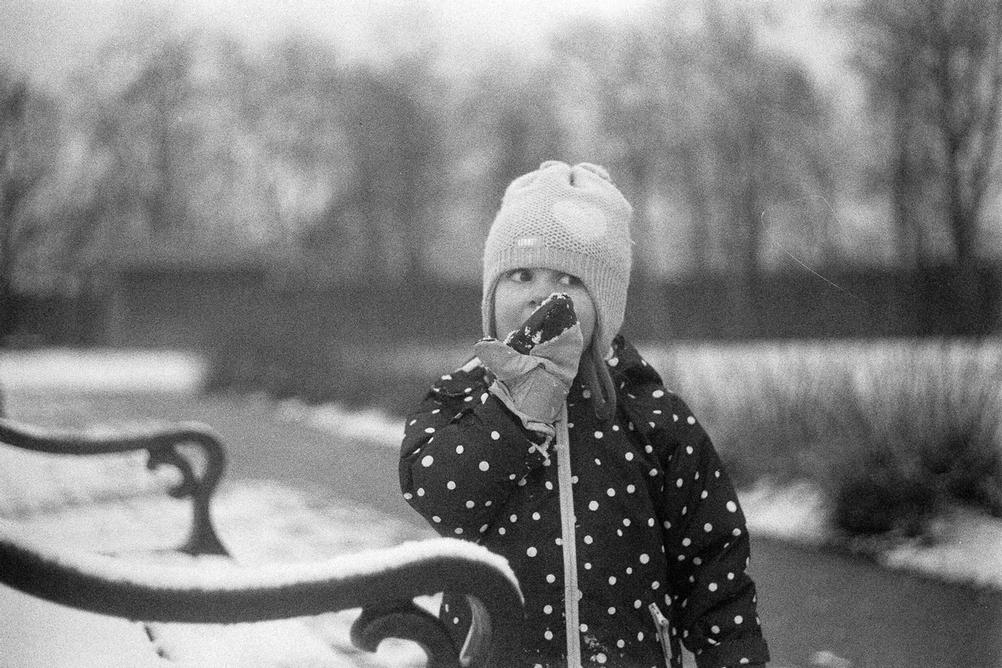
- Camera
- Canon Model 7
- Lens
- Canon LTM 50mm f1.8
- Film
- Ilford HP5+ EI400
- Development
- Ilford LC29
- Scanner
- Reflecta ProScan 10T
Example of how smooth and pretty bokeh can be on film. It's difficult to beat good bokeh on film.

- Camera
- Leica M9
- Lens
- Canon LTM 50mm f1.8
On digital the lens can still deliver a pleasing bokeh and good subject separation.
Verdict
It may seem that I'm quite negative on this lens but that is definitely not the case. In fact - it's currently my favourite lens to put on Leica M9. I don't like it on film that much which is why I have to deduct some points. I will have to try this on a contrastier, lower ISO film to see if it behaves any better.
Don't be discouraged to use this on film. For the price ( even current prices ) it's still a really good option. I like it better than Jupiter-8. I have also seen some amazing photos taken with this lens on film - just not by me. Maybe I haven't found the right way to use it on film...yet.
On digital this lens is absolutely amazing. When shot on a CCD sensor ( read: Leica M9 ) - it produces the most amazing rendering. It looks very film-like. The look might not be for everyone but it's definitely the right look for me. Sure you can overuse it. And it's not for every circumstance - but at the moment I'm really, really enjoying it. When there's a bit of sun. Or some other light. It will produce images that are joy to look at. After a bit of post processing.
Should You Get This Lens
Because of the price it's difficult to say no. Even if I don't love the results on film - it's still very worth it. Are there better, cheaper lenses around that work on rangefinders? Maybe - but I haven't any. This is currently the best that I have used.
If you shoot digital and like the "film look" - you must try this lens. Maybe it doesn't render as well on more modern CMOS cameras with many, many megapixels. On CCD sensors it's gorgeous. I'm sure it's fine on CMOS as well - especially after some post-processing.
The only worry is the haze. If you don't plan to shoot much against bright objects or enjoy the "misty" look that the haze might enhance - don't worry much about haze. Otherwise try to get one without haze although it will increase the price.
